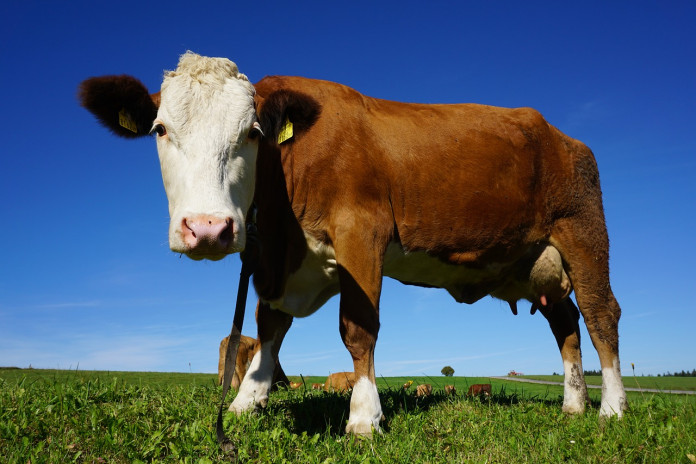When building fences, we generally build them where it makes sense. We build them where we want our cattle to graze, and where the best forages are. We also build fences according to where there is an available water source.
A lot of the time this means building fence where cattle have access to streams and wooded areas. Although this may seem completely harmless, there are many reasons why cattle should be fenced out of areas like this.
Wood lots on farms in Belmont County are often located on steep areas that can’t be easily farmed, and in many cases cattle are allowed access to these areas. Several benefits for farmers to this include keeping the understory knocked down so it doesn’t become overgrown and it also provides shade for the herd.
Environmental issues
Along with these uses come several environmental disadvantages.
Allowing cattle to access woods can cause decreased timber value because of the tree roots being trampled. Along with the roots, the understory is also trampled and leads to loss of wildlife habitat.
Soil compaction issues can also occur and cause erosion within the woodlot. If shade is needed for the herd, a small portion of the woods can always be fenced in with the pasture, but the majority should be excluded. Allowing cattle to have access to streams and ponds can cause even more environmental issues and even health issues within the herd.
Protecting streams
By fencing out cattle from streams, the streambank remains protected. The widening of streambanks from trampling can increase the amount of sediment and erosion in the stream which in turn decreases the water quality.
Overgrazing will often occur near the streambank, reducing the buffer strip and allowing for increased infiltration of nutrients into the stream. The absence of a buffer strip and increased nutrient flow into streams can potentially cause harmful algal blooms, which will deter cattle from drinking the water.
A good buffer strip is a necessity near streams, especially if the cattle are being fed uphill from the stream and there is a possibility of nutrient runoff. Along with environmental reasons to fence cattle out of streams, there are also nutritional and physical health reasons as well.
Water is the most important nutrient for any animal. The cleanliness of that water is equally important. Water quality is affected by pH, odor, total dissolved solids, bacteria, nitrates and salinity.
Nutritional concerns
If any of these factors are at an undesirable level, cattle will not receive the proper nutrition that they need to grow, regulate their body temperature, reproduce, and digest as well as many other bodily functions.
On hot days or even when just trying to get a drink, cattle like to stand in water. What goes in must come out, so the water that they are standing in is then contaminated with urine and feces.
Other cattle drinking this contaminated water are then subjected to all kinds of diseases, such as lepto, E. coli, and mastitis. Not to mention the risk of injury from sharp rocks or from falls.
A simple solution to this problem would be to just fence the cattle completely out of the pond or stream. Sometimes this is not an option for a landowner because this may be their only source of water for their cattle.
Limiting access
If no other watering option is available, a landowner could limit access to the pond. A small portion of the pond could be allowed access to, by fencing where cattle could get a drink without being able to wade in the water, or stand for an extended period of time and defecate into the water.
A similar outcome can be attained for streams. Streams could be fenced out except for a small portion where a cattle crossing could be installed.
This serves the same purpose as the pond fencing. Stream crossings can handle high traffic from livestock with minimal impact on the water quality.
Fencing your livestock out of wooded areas, streams and ponds may not be the easiest transition to input on your farm but the outcome will be worth it.
The health of your herd and your property will progressively increase.













